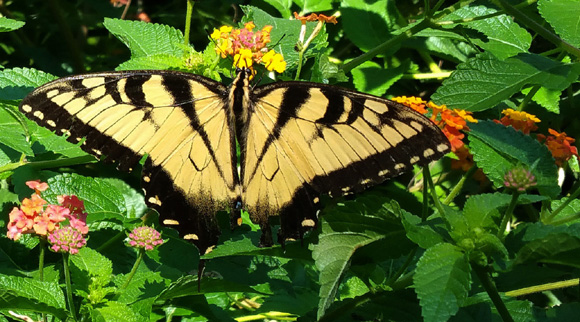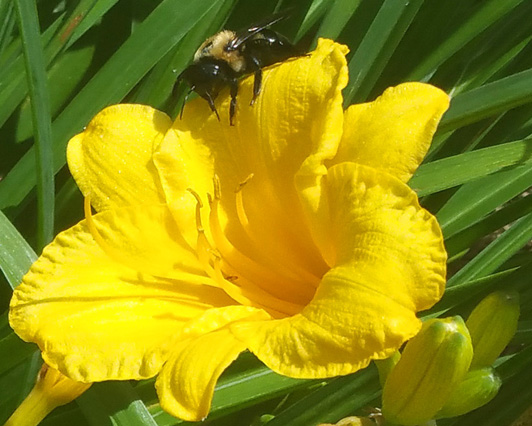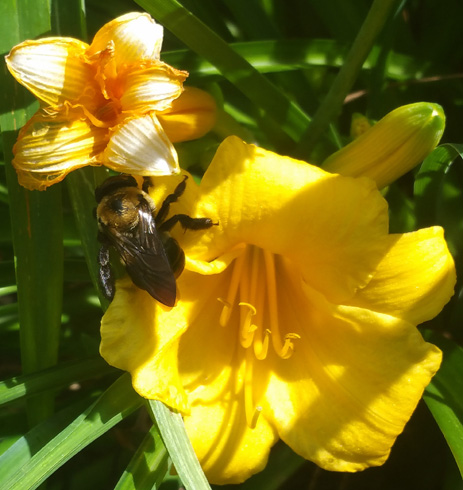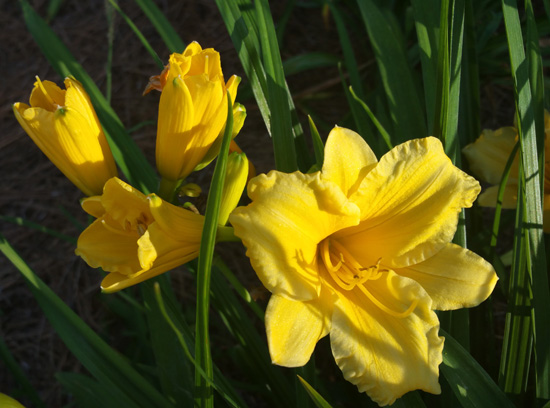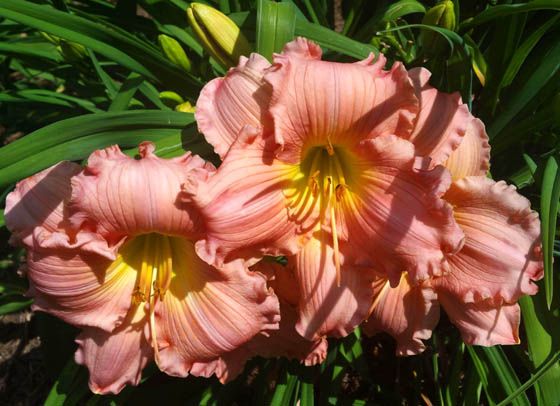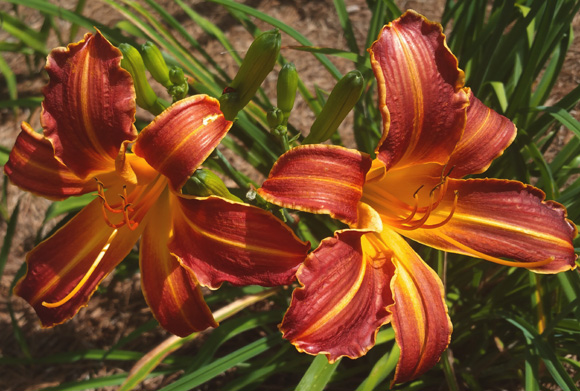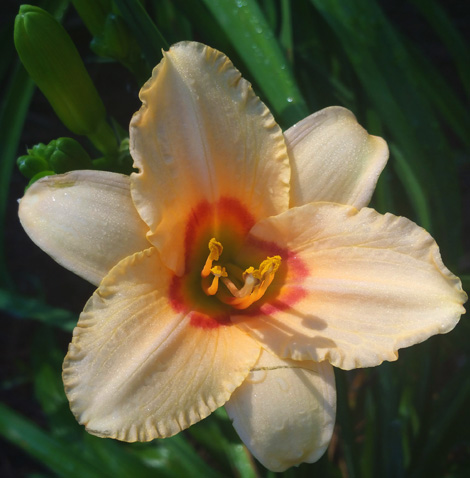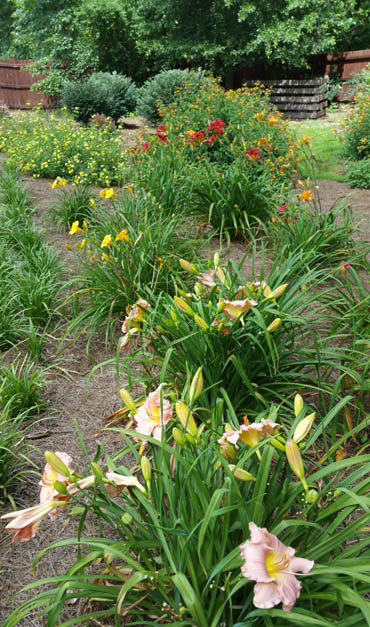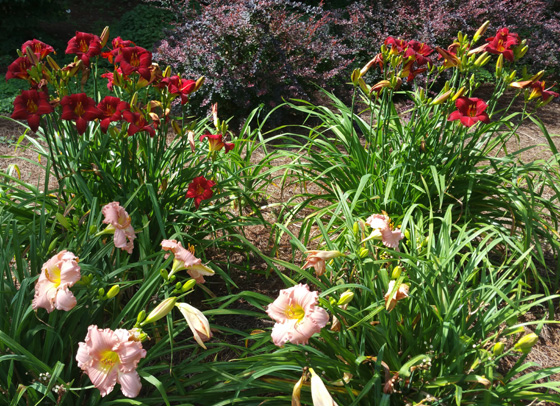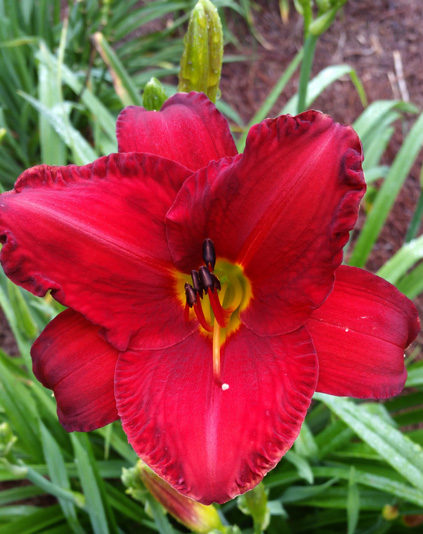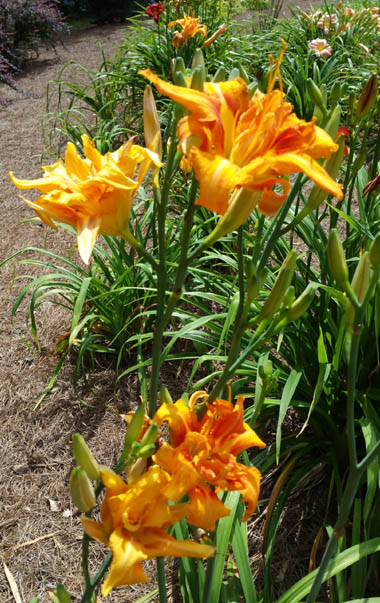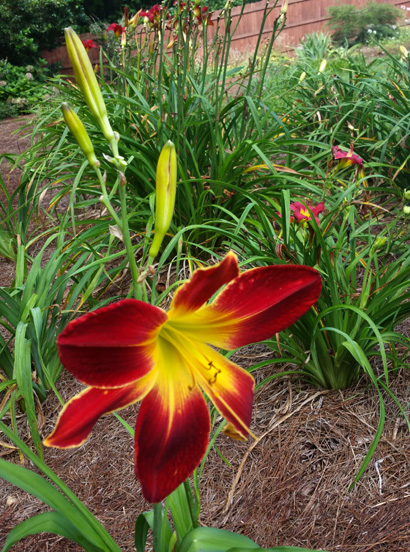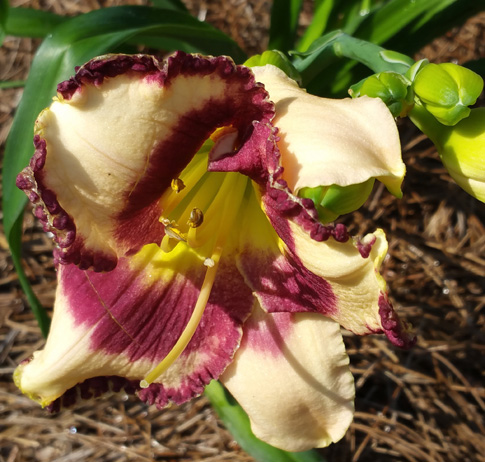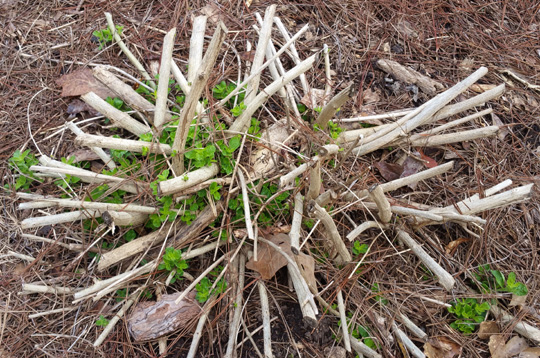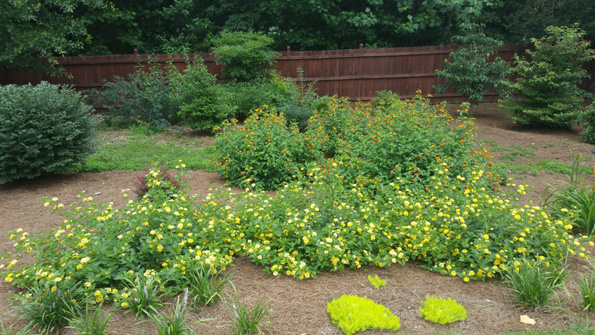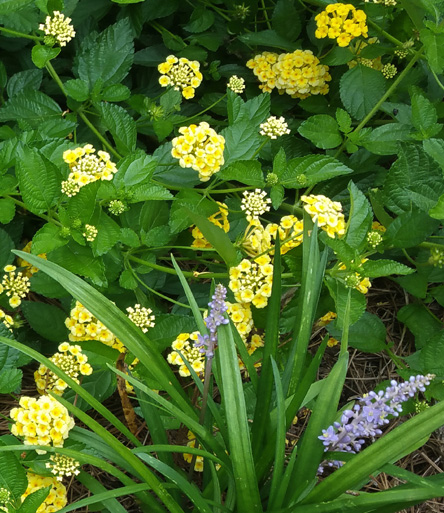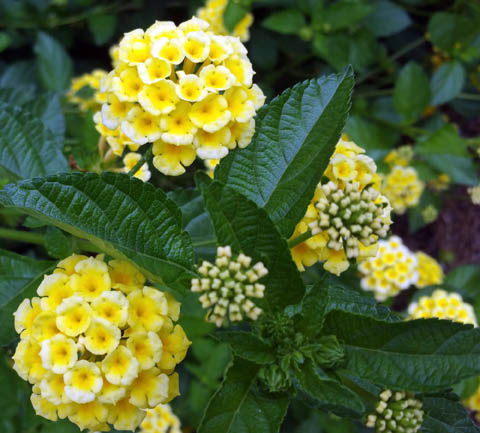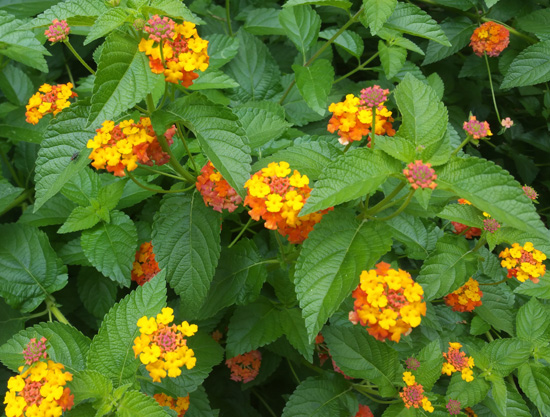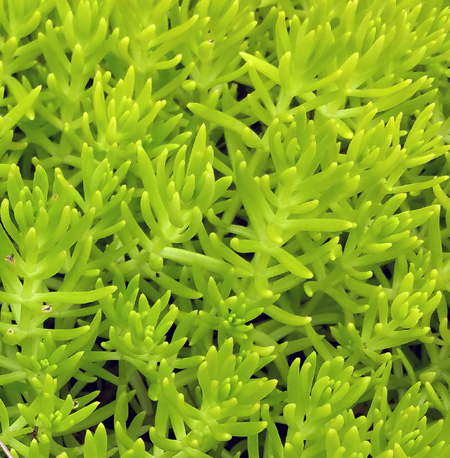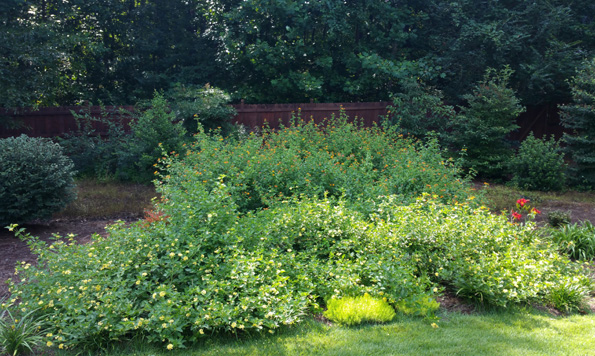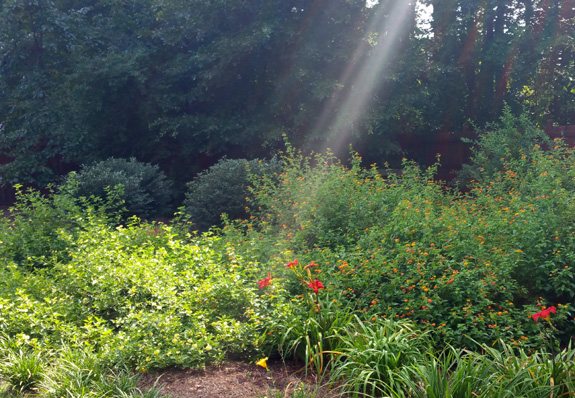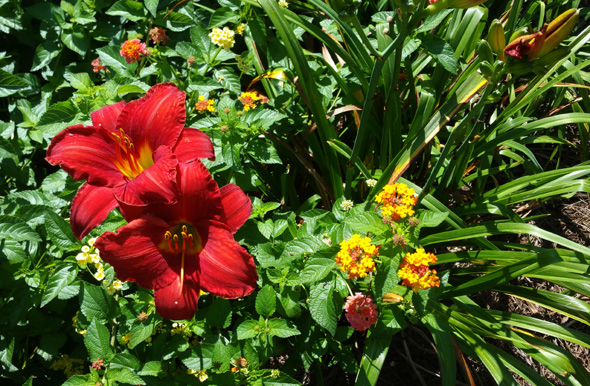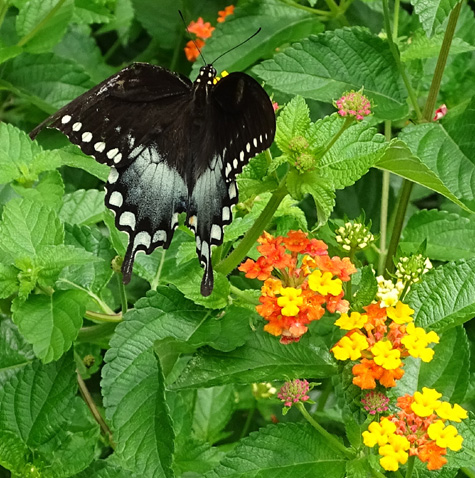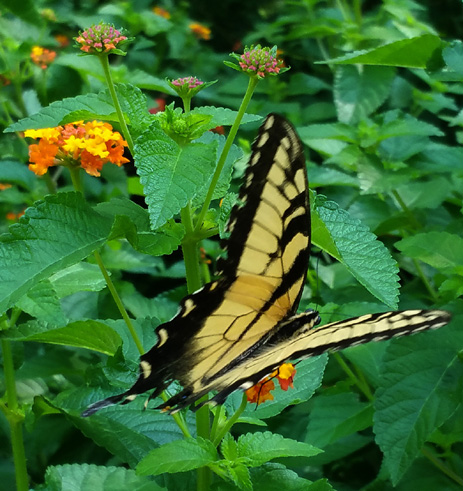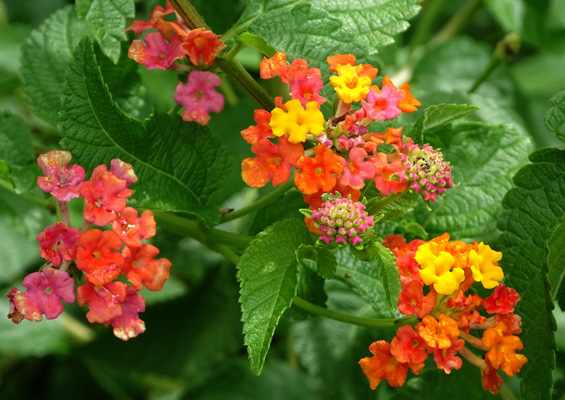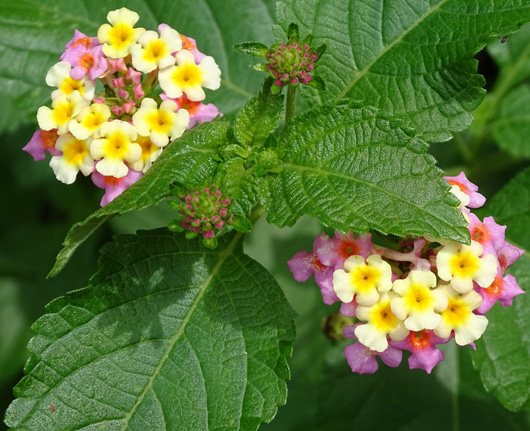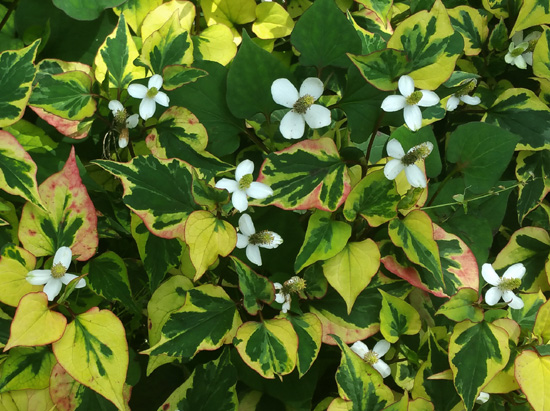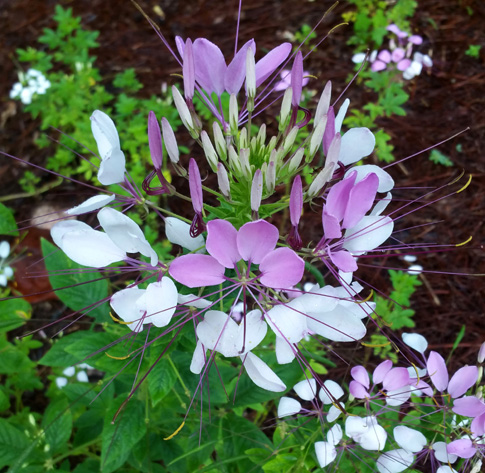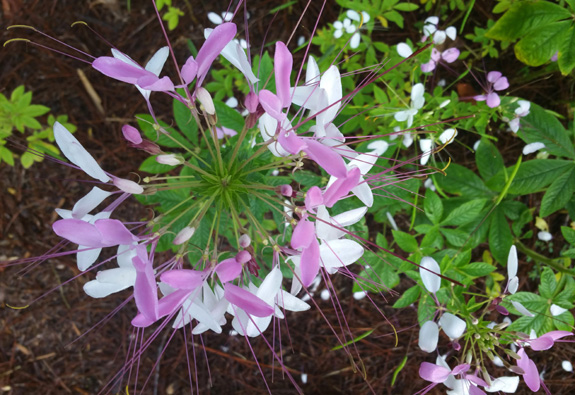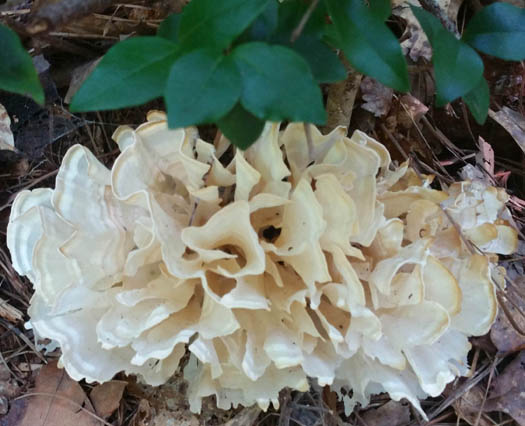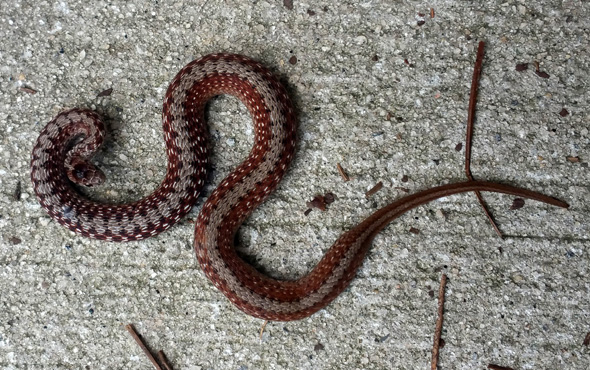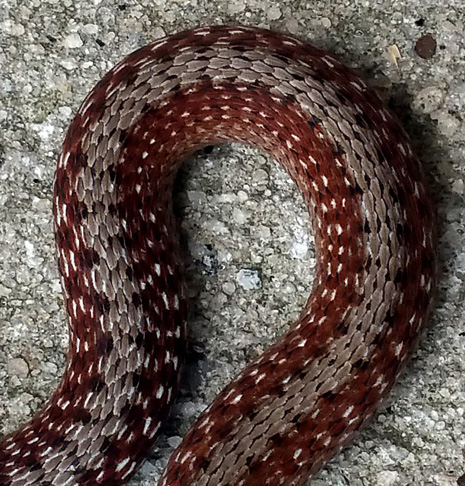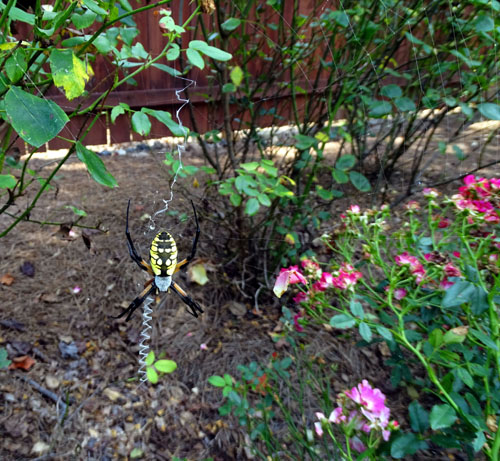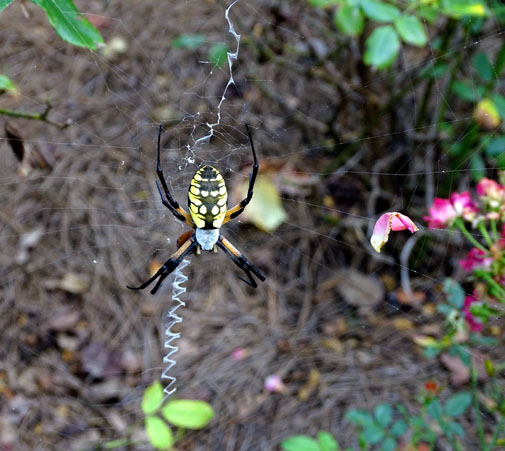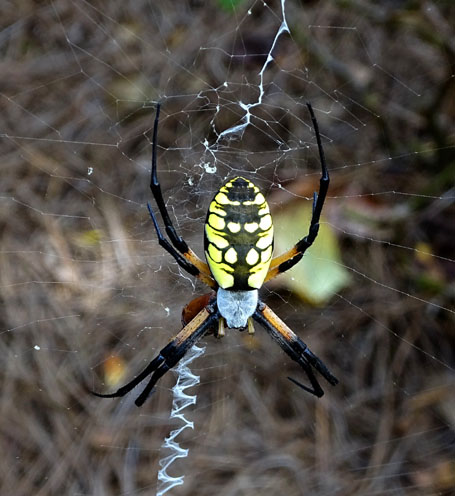|
RUNTRAILS' 2020 JOURNAL
Eastern tiger swallowtail butterfly feeding on Miss Huff lantana flowers in our yard
| ||
|
DAYLILIES These have been another resounding success, and this year several
have grown big enough to definitely need dividing in early winter. They
are very easy to grow and maintain. Most of the daylilies were planted in the spring of 2017. I added two
new varieties this spring. There is a variety of colors and heights. All
bloom the most from May to July but some are re-bloomers and keep going
after that. This first series of photos is from May, starting with bright
yellow-gold Stella de Oros:
The next four photos were taken in June:
I don't have tags for the daylilies I didn't identify,
and there are some for which I do have tags that aren't shown here. In mid-July I planted these two new varieties:
Although the peak bloom for our daylilies is during the
summer, still had flowers in September. LANTANA Another one of our gardening successes is lantana. These shrubs have
also grown much larger than advertised on their plant tags! Not
complaining, just a warning to others to plant them where they'll have
plenty of room to grow if they like the conditions. Lantana is a deciduous shrub that not only loses its leaves in the
winter but also needs to be severely pruned back before it starts
sending out new branches. I prune in mid-winter -- cutting each
and every stem back to 8-12 inches, and then covering them with wheat or
pine straw to prevent water from seeping inside. Then sometime in early spring I remove the straw and soon see new
little green shoots popping out all over. Before long they'll cover the old
"carcass." This photo was taken March 27:
Our lantanas take a few months to reach their full size each summer but
by July or August they are huge. I'll show some of the growth sequence here.
The next five photos are from mid-June. The three shorter lantanas in the foreground
with yellow flowers are the Chapel Hill variety I planted in 2018.
They had an earlier growth spurt than the five multi-colored Miss Huff
lantanas behind them that I planted in 2017:
Chapel Hill yellow lantana (above and
below) and blue flowers on liriope
Before long that chartreuse-colored groundcover in the foreground was covered by
the Chapel Hill lantanas and they were starting to crowd the daylilies to the right!
The next five photos are from August when the
lantanas were at their peak size:
When one of the azaleas behind all the lantanas died this spring
I wanted to replace it with a Miss Huff but couldn't find one. So I planted a
third variety of lantana, purple and yellow Mary Ann:
Since it's still relatively small it was hidden by the larger lantanas in front
of it this summer. We only saw it when walking the dogs near the back fence. CHAMELEON PLANT Three years ago a generous neighbor who also loves to garden gave us two
types of plants that have multiplied many times over -- columbine seeds (photos
of those flowers are at the top of the previous page) and Chameleon groundcover
plants that were getting out of control in her yard. Yes, she warned me about how fast they spread! But we needed a
groundcover and were thrilled to get her plants.
The deciduous Chameleons have very attractive pink and green
leaves and bloom in early summer:
They love moisture and spread quickly so I planted them between
some shrubs and trees on either side of the "dry creek" that
runs across our back yard in hopes they would reduce erosion
when it rains. They work as well as any other plant would in
that regard but river rocks would be better . . .
If you plant Chameleons, beware of their invasive nature and plant them where
they'll have plenty of room to grow. Or dig 'em up and share 'em with neighbors! CLEOME
Also two or three years ago we were surprised when two Cleome plants popped
up in our back yard. We weren't familiar with them and didn't know where the seeds came
from but we were intrigued by the leaves that look like marijuana!
When they bloomed, I could identify them. We love their beautiful, airy flowers:
Now we have several dozen Cleomes. Fortunately, the original seeds landed in
a spot where I didn't have to relocate them.
TRANSIENT "VISITORS"
Each year we get some type of interesting fungi growing in the mulched area
of the back yard. This year it was an attractive white fluted formation that
lasted a couple weeks before decaying:
Considering the type of year 2020 has been, I'm surprised we didn't get any of those
gross, fowl-smelling stinkhorns that we've had a couple previous summers. If you haven't
seen or heard of them before, I encourage you to do a web search.
Speaking of surprises, one day in early June I was carrying a big armful of pine straw
from its bale to the front yard and this two-foot long snake fell from the pine
straw to the driveway:
This is a G-rated website so I won't repeat what I said when I realized I'd just been
unknowingly cradling that thing in my arms!!! I could see that it wasn't poisonous, but
it was so unexpected that it creeped me out.
I took photos and identified it as a DeKay's brown snake, apparently fairly common
in Georgia but I'd never seen one before. The colors and pattern of the skin are really quite
attractive:
And although spiders creep me out even more than snakes, I was never fearful of the huge
female golden orb-weaver spider that took up residence between some of the Knockout
roses in the back yard in mid-August.
Neither Jim nor I had ever seen a spider like this before but she was easy to identify online. This original web designer entertained us for about a week before disappearing. She is a common
but spectacular black and yellow Argiope aurantia, a useful, non-poisonous garden spider:
The webs she built were about three feet in diameter, which is an impressive net to catch prey!
These spiders consume their webs at night, and everything that gets caught in it, and build a
new web the next day. That's a lot of web to build every day. Note the unusual white zig-zag structure she built in the middle of the web. It's
called the "stablementum" and it has several purposes. One morning I had the good fortune to watch her "write" a stablementum and it
was fascinating. It took her about two minutes to complete it. She was
a big girl -- her body was at least two inches long, plus four
very long legs. The front legs have claws:
You can
read all about these fascinating spiders by doing a "web" search online.
We missed her when she left. If we're lucky (???) she may have laid some
eggs in our yard that will hatch next year so one or more of her
offspring can entertain us in 2021. Oh, I forgot. I don't like spiders!
<wink> Next entry: carrying on part of my mother's
legacy -- lots of rose photos Happy trails,
Sue
© 2020 Sue Norwood and Jim O'Neil |
|||
